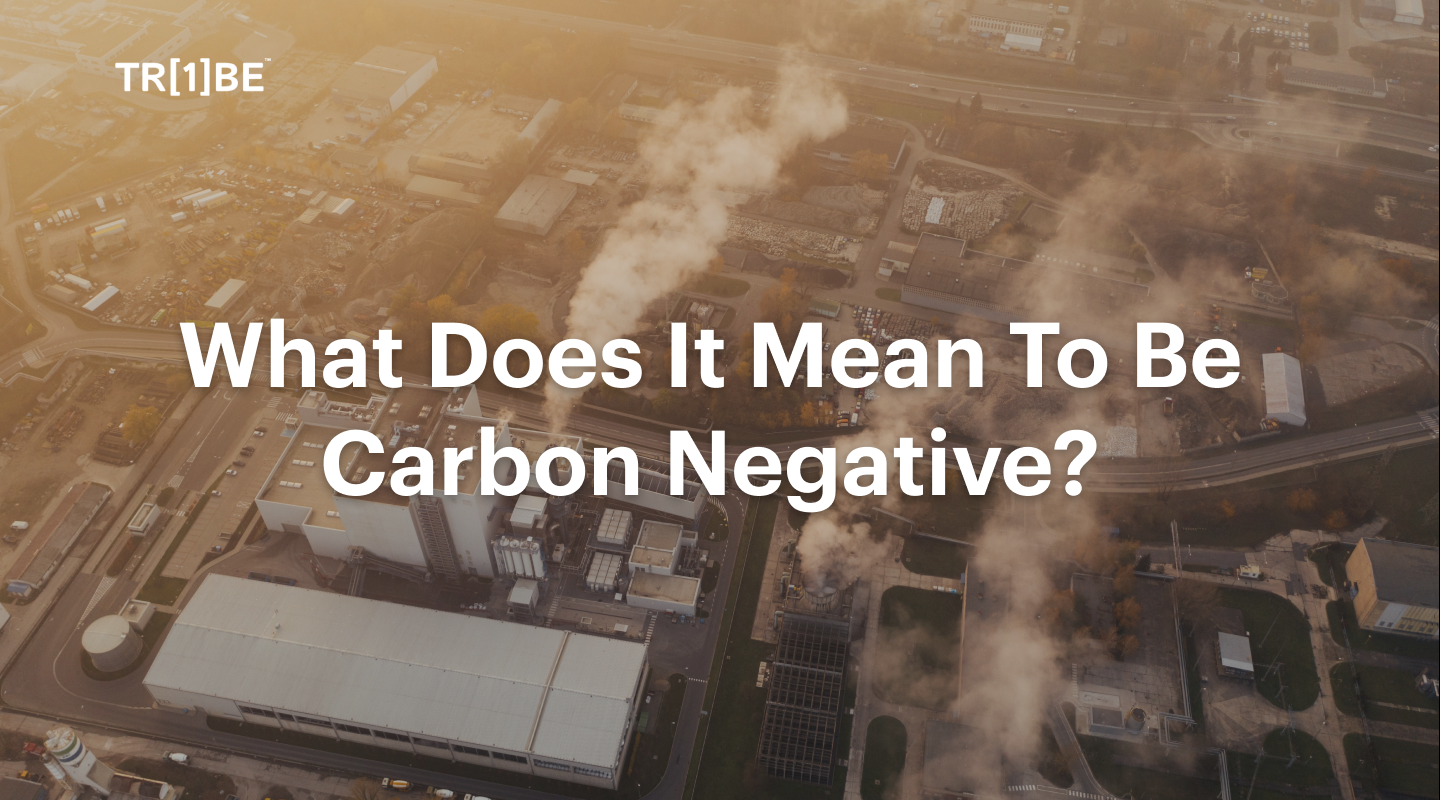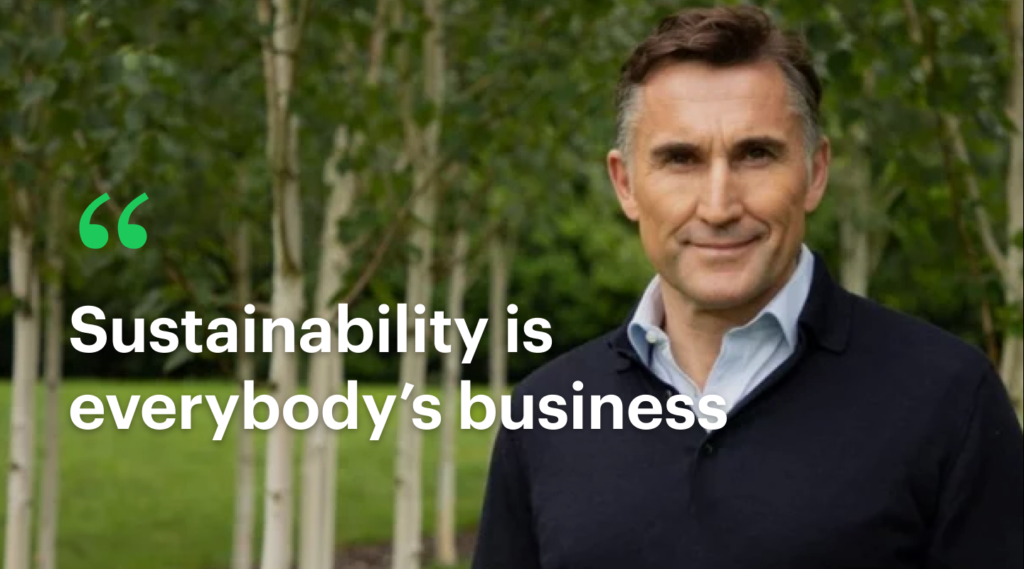
What does it really mean to be carbon negative? We take a look at why carbon negative has become so important and how to start your carbon-free journey…
In an effort to protect the planet, your business may find itself rapidly racing to reach net zero.Part of this mission is becoming carbon negative. As the name suggests, carbon negative in business terms is when an organisation removes more carbon from the atmosphere than it emits. Businesses can remove carbon from the atmosphere by purchasing carbon credits or investing directly in carbon capture, sequestration and removal processes. This article will explore why carbon negative is a worthy long-term goal and how your organisation can achieve it.
While carbon negative may seem complicated at the beginning of your sustainability journey, companies can quickly master the methods of saving energy and reducing emissions. When that becomes the case, companies committed to environmental protection should consider going even further.
Why? As EY Global Vice Chair Steve Barley said, “Sustainability is everyone’s business.”

However, not every business is equally capable of or willing to contribute to the solution. Some companies, like manufacturers and retailers, will have a harder time achieving carbon neutrality or limiting their emissions. While there are great examples of industry leaders and innovators doing just that, not everyone will be willing. That’s why exceptional moral leadership is required from those who understand the gravity of the environmental crisis.
Every great executive aims to grow and innovate for the sake of revenue — and leaders should do the same for sustainability. Because if you’re not moving forwards, chances are you’re moving backwards.

The best climate action any business can take is the reduction of carbon emissions through energy-saving efforts. However, for most companies, even carbon neutrality cannot be achieved with reduction alone. To reach carbon negativity, businesses must participate in efforts to capture and remove carbon from the atmosphere. These efforts include planting and protecting trees, preventing deforestation and even using new technologies that capture carbon from the air and store it safely in a solid form.

One way businesses can participate in carbon removal is by buying carbon credits. When you buy a carbon credit, you’re paying another organisation to undertake those carbon capture and removal efforts on your behalf. However, you’ll want to purchase from a verified partner to ensure you’re making a legitimate impact. One Tribe’s carbon credit marketplace gives your business access to well researched, vetted vendors.
There are also more consistent, subtle ways of building carbon removal into your business, like using a digital tool that commits a portion of every purchase to carbon reduction. This can also positively affect your brand by showcasing your commitment to the environment and giving customers a sense that they’re actively participating in protecting the planet.
To achieve any significant climate goal, sustainability must be built into your business. It must become a guiding principle and a dedicated responsibility for your team members. That’s why going from your current state to carbon neutrality should only be the beginning of your journey. Those processes and values will make it easier to aim for greater heights. Plus, the added value to your brand and your conscience will be well worth it.
carbon negative, what is carbon negative, how to be carbon negative, which companies are carbon negative, companies that protect the planet, how to protect the planet with my company, how to get to net zero, companies that get to net zero, how to remove carbon from the atmosphere, how much carbon do companies remove, how carbon is removed, what are carbon credits, where to buy carbon credits, buy carbon credits, what are carbon credits for, how carbon credits are used, how carbon credits are spent, what is carbon capture, sequestration and disposal, how does carbon sequestration work, how is carbon captured, where is carbon sequestration stored, why is carbon negative good, methods to save energy and reduce emissions, what are the best methods to save energy and reduce emissions, sustainability is everyone’s business, Steve Barley, energy saving, new technologies that capture carbon, digital tools that spend a portion of every purchase on carbon reduction,
One Tribe is a Climate Action Platform enabling businesses and their customers to make a positive environmental impact.
Eric currently works as an independent consultant at the intersection of nature and climate, focused on catalysing market and non-market solutions to drive the just transition.
He previously was Head of Product at Earthshot Labs, supporting nature conservation and restoration projects across the global south secure project finance. Prior to Earthshot Labs, Eric led nature-based carbon project development for Gorongosa National Park in Mozambique and founded the Carbon Cooperative, a global alliance of leading nature conservation and restoration practitioners exploring carbon finance. After serving in the Peace Corps in Mozambique out of university, he spent much of his 20s working in community-based conservation and ecosystem restoration efforts in Sub-Saharan Africa interspersed with two startup ventures as co-founder and CEO of a mental health tech startup and COO of a sustainable coffee company. Eric has a dual Masters in Environmental Engineering and Environmental Policy from Stanford University where he was a NSF Graduate Research Fellow and a BS in Environmental Engineering from Tufts University.
Alan is a risk management thought-leader, superconnector, and FinTech pioneer. His mission is to enable an Earth Positive economy which includes nature in global accounting systems.
Alan is Founder of Generation Blue, a venture studio dedicated to planetary game changers powered by exponential technologies. Previously, Alan established Natural Capital Markets at Lykke AG, pioneering blockchain based forestry and carbon backed tokens. Alan has over two decades of risk management experience advising global financial institutions, and was a founding member of the RiskMetrics Group, a JPMorgan spin-off. Alan is an investor and advisor to regenerative impact ventures, including TreeBuddy.Earth, Regenativ, and Vlinder Climate.
Lori Whitecalf made history when she became the first woman to be elected Chief of Sweetgrass First Nation in 2011. She served three terms of office from 2011-2017.
Lori took a two-year hiatus from leadership to expand the family ranch and serve as the FSIN Senior Industry Liaison. She was re-elected on November 29. 2019 and again on November 30, 2021, as Chief of Sweetgrass. Chief Whitecalf practises a traditional lifestyle of hunting, fishing and gathering. She currently sits on the following boards: Saskatchewan Indian Institute of Technology, FSIN Lands and Resource Commission, Battle River Treaty 6 Health Centre and Battleford Agency Tribal Chiefs Executive Council, FSIN Women’s Commission.
Tina is the Chief Business Officer for MLTC Industrial Investments, the Economic Development arm of the Meadow Lake Tribal Council. She has a diverse background of experience. Having spent 15 years as a municipal Chief Operating Officer, 20 years involved in Saskatchewan’s Health Authority Board Keewatin Yatthe and 9 years with Northern Lights Board of Education.
She continues as a Board Member with Beaver River Community Futures supporting small business development in her home region. Tina brings a wealth of experience in a variety of fields and many connections to the Indigenous communities of Northern Saskatchewan. In addition Tina holds a BA Advanced from the U of S, a Certificate in Local Government Authority from the U of R and is certified as a Professional Economic Developer for Saskatchewan and a certified Technician Aboriginal Economic Developer (TAED).
Tootoosis’ career spans 40+ years in HRM, political leadership, and Indigenous economic development, as a dedicated bridge builder and advocate for Indigenous causes.
As a key member of the Saskatoon Regional Economic Development Authority (SREDA) team since 2021, he develops strategies for the Truth and Reconciliation Commission final report and Call to Action #92.
He is a graduate of the First Nations University of Canada and a certified Professional Aboriginal Economic Developer. Spearheading various community initiatives while serving as a Chair of the SIEDN while directing ILDII and WIBF. Founder of MGT Consulting Tootoosis is based in Saskatoon, Treaty Six Territory.
Cy Standing (Wakanya Najin in Dakota) has a long and distinguished career including serving overseas as an Electronics Technician in the Royal Canadian Air Force, former Chief of Wahpeton Dakota Nation, former Vice Chief of the Federation of Saskatchewan Indigenous Nations (FSIN), past Executive Director of Community Development Branch of the Department of Northern Saskatchewan as well as an Order in Council appointment to the Federal Parole Board.
Mr. Standing has served as a Director on many Profit and Non-Profit Corporate Boards, including serving as a Director for Affinity Credit Union with assets of over six billion dollars as well as IMI Brokerage and Wanuskewin and is currently a member of the One Tribe Indigenous Carbon Board.